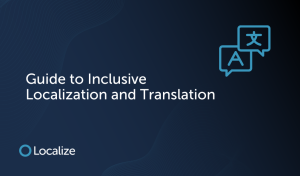If you are just getting started in international marketing, it’s a good time to consider website localization.
The localization process includes translating your site into new languages and adapting the site for a specific target locale. But you don’t need to expand your website to a dozen new countries at once. It’s best to start small, go slowly, and identify your prospective customer base in a few countries.
Your first step is to determine which country or countries your product or service will likely be most successful in, and start there.
Tips for Identifying an Ideal International Target Market
Here are some tips to help you identify your best international target market.
1: Research, Research, Research
You need to thoroughly analyze any country that you think should show great potential for your product or service. And, bear in mind that even the big global players like McDonald’s have sometimes found it necessary to close down or decrease their presence in some countries. Sometimes companies find there is not sufficient market demand for their offerings or it’s too arduous to comply with burdensome local legislation. So, deciding to jump feet first into a foreign marketplace without proper research is, to put it mildly, highly unadvisable.
Big international players such as McDonald’s can absorb the cost of localization blunders, but will you be able to? To avoid the common pitfalls of international expansion, do plenty of research in your target market to see if there’s a strong need for your services there. Look at a variety of data sources, including GDP, cell phone and internet usage, and language proficiency.
2: Make Specific Marketing Personas for Each Locale
Your research has to come up with something called your international buyer persona. Personas are profiles that represent groups of people in your audience. They can help you figure out how to deliver your marketing messaging while reaching people on a personal level. You can do this by conducting specific research in each geographic region you want to target.
To provide a simple example, merely relying on generic data about an entire continent is not good enough. For instance, coming up with a one-size-fits-all plan for Europe won’t be of much use. And, it’s not just a question of language. The French people are different from the Germans, and they have a very different culture. So, if your initial target is wide (like all of Europe) you’ll need to narrow it down and assess the possible demand for your product by country. If you discover that there seems to be great potential in one country, then start out there.
3: Ask Some Essential Questions
The success of your website localization project will depend on how well you manage the planning stage. Try to obtain the answers to a few basic questions in each specific international target market, for example:
- Is there interest in your product or service?
- Is the market for your product growing, and at what rate?
- How many competitors will you have?
- Can local consumers afford your product?
- What are the buying preferences of your target audience?
- Will the cost of transportation and customer support be worth it?
- Is your potential market worth the cost of website localization?
Conclusion: Localizing Your Website
Once you’ve chosen your international target market, you need people on board who understand what makes your target customers tick. First-class translators will be able to translate and localize your site so that local people will identify with it.
Localize is a Translation Management Service (TMS) that simplifies the entire website translation process. To learn more about how we help top brands like Cisco and Microsoft manage their international content, contact us anytime!







